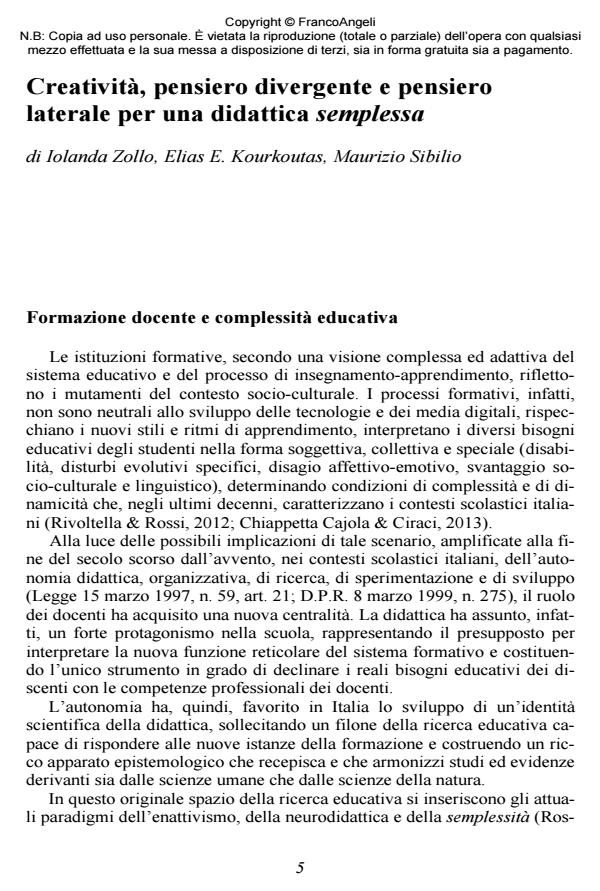Creatività, pensiero divergente e pensiero laterale per una didattica semplessa
Journal title EDUCATIONAL REFLECTIVE PRACTICES
Author/s Iolanda Zollo, Elias E. Kourkoutas, Maurizio Sibilio
Publishing Year 2015 Issue 2015/1
Language Italian Pages 13 P. 5-17 File size 93 KB
DOI 10.3280/ERP2015-001001
DOI is like a bar code for intellectual property: to have more infomation
click here
Below, you can see the article first page
If you want to buy this article in PDF format, you can do it, following the instructions to buy download credits

FrancoAngeli is member of Publishers International Linking Association, Inc (PILA), a not-for-profit association which run the CrossRef service enabling links to and from online scholarly content.
In the current dynamic school contexts, teachers are requested to plan and implement flexible and differentiated didactic programmes with the aim of meeting all the students’ needs and bring their potential to light. This educational investment, besides being a professional need, aids in removing any obstacle to learning and promotes full participation in school life. This article outlines the theoretical framework of creative thinking within a simplex perspective, intended as a tool for didactic deviations, and consequently provides the basis of how this innovative strategy could help to decipher and face complexity in challenging situations.
Iolanda Zollo, Elias E. Kourkoutas, Maurizio Sibilio, Creatività, pensiero divergente e pensiero laterale per una didattica semplessa in "EDUCATIONAL REFLECTIVE PRACTICES" 1/2015, pp 5-17, DOI: 10.3280/ERP2015-001001